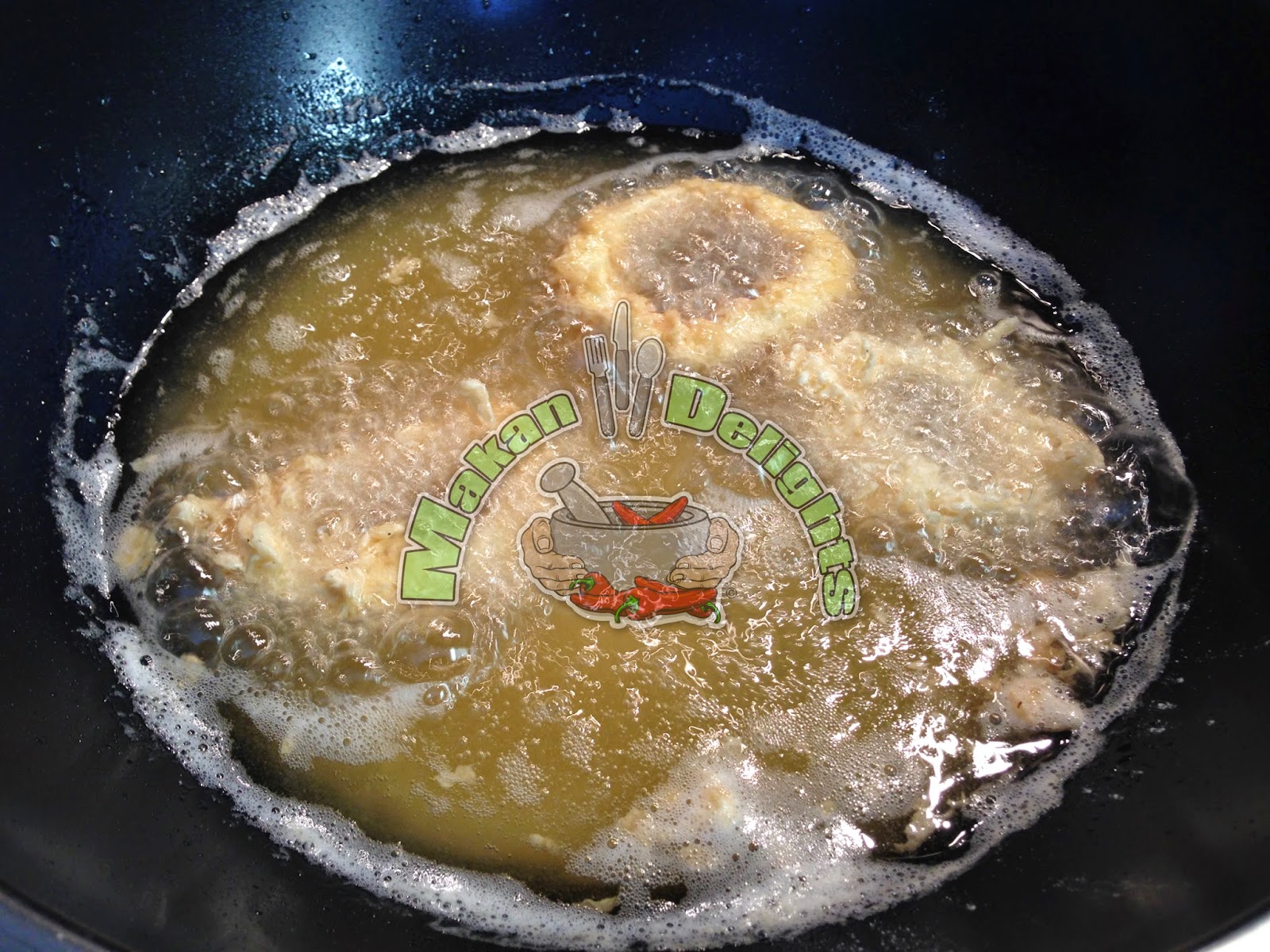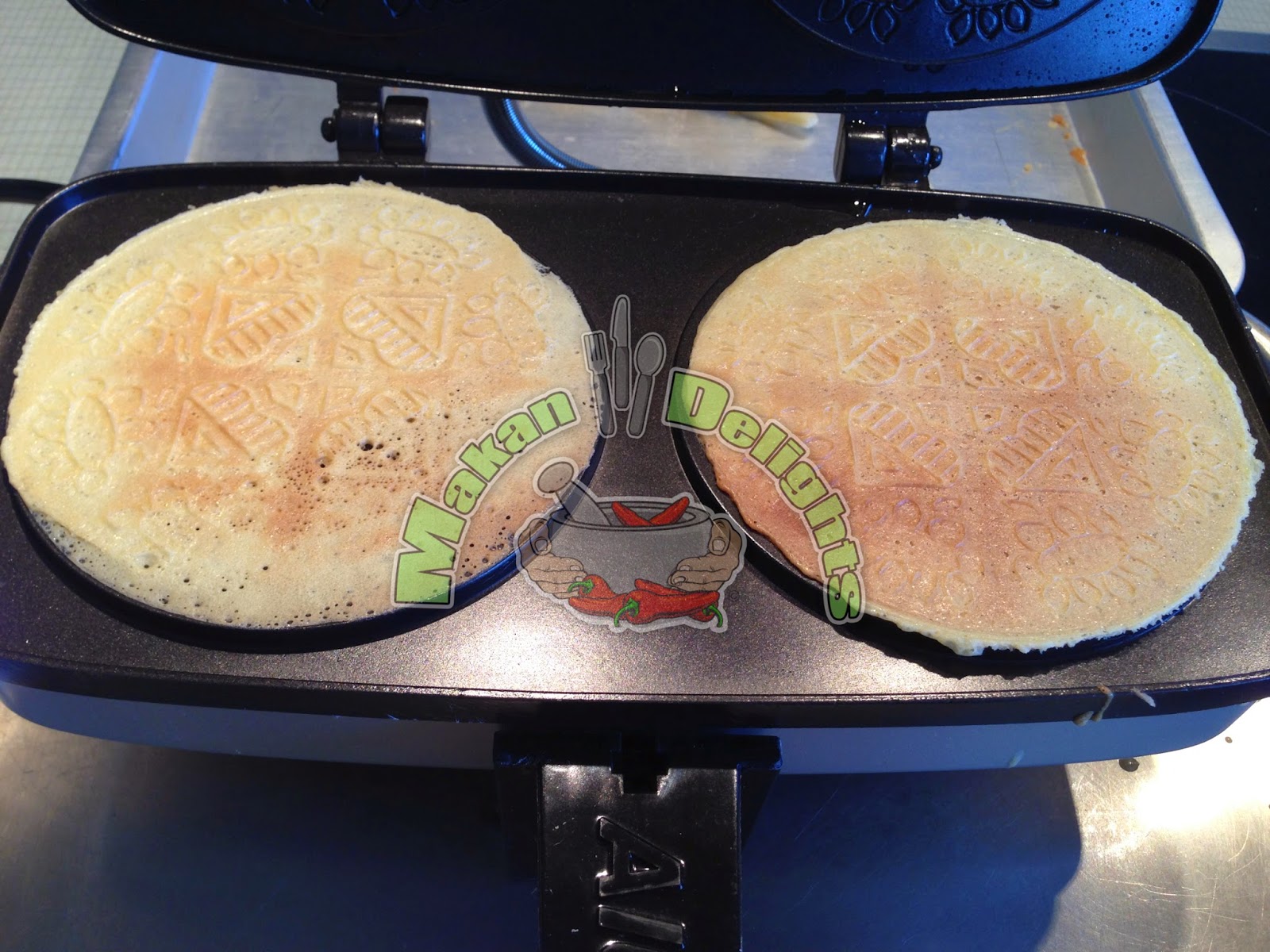Another popular cake which is served during Chinese New Year and Eid Mubarak celebrations. I used to be crazy of Bengawan Solo's Kek Lapis and always carried one cake on our return flight home, but I have stopped doing so since 3 years ago.
Kek Lapis is known to be one of the most leceh (troublesome) cake because of its multiple layers. I took slightly more than 2 hours to bake all 18 layers and I enjoyed every minute or I should say, every layer of it. This cake is rich in taste, just look at the number of eggs which I added! If you decide to bake this cake, please read the recipe carefully, especially the preparation method.
Ingredients:
500 g butter
100 g condensed milk (thick)
30 egg yolks
220 g fine sugar
1 tbsp ovalette (optional)
100 g cake flour
30 g milk powder
1 tsp rempah kuih or spekkeok powder (mixed spices)
extra condensed milk
150 g melted butter
an 8"x8" baking pan
Method:
Sift cake flour, milk powder and rempah kuih into a bowl and mix well. Set aside. Grease the bottom of baking pan with butter and line with baking paper. Make sure that the baking paper fits the pan exactly! There is no need to grease the sides of baking pan.
In a small bowl, mix a little condensed milk with 2 tbsp of melted butter. You need to prepare this mixture again whenever needed. This mixture is used to grease between the layers of batter.
In a mixing bowl, whisk butter and condensed milk until light and pale in colour.
In another mixing bowl, whisk egg yolks, fine sugar and ovalette together at high speed until thick and creamy. Important note: Ensure that bowl and whisk are CLEAN and FREE of butter or oil!!! Or else, your egg yolks mixture would not triple in volume!
Add butter mixture to egg yolks mixture and whisk at low speed until well mixed. Do NOT overmix! Your batter should not curdle. If it starts to curdle, add a tablespoon of the flour mixture.
Lastly, fold in flour mixture carefully, a tablespoon at a time, until well mixed. Take about 80 g of batter and transfer to a small bowl.
Preheat conventional oven (with top & bottom heat) to a temperature of 170° C with the empty baking pan inside the oven. Do NOT use convectional (fan) oven! Once required temperature is achieved, remove baking pan from oven. Immediately change your oven setting to TOP HEAT ONLY (small grill) and adjust the temperature by taking the lowest possible temperature available. My Miele oven has a lowest temperature of 200° C for grilling. Place your oven grate on the second rack from bottom.
Add 80 g of batter in baking pan and by using the back of a tablespoon, spread batter evenly to cover the base.
Bake in oven for about 3 to 4 minutes or until golden brown. Kindly note that your baking time might differ from mine. So, please stay by the oven and observe! Once ready, remove from oven. By using the kek lapis presser, press evenly all over. If there are bubbles on the surface, poke them with a toothpick before pressing it with the presser.
Then, brush evenly with the condensed milk/butter mixture by using a pastry brush.
Once done, add 80 g of batter and spread evenly on the baked layer. The hot baking pan will melt your batter and spread it evenly.
Repeat procedure until all batter is used up. Once the last layer is baked, brush evenly with condensed milk/butter mixture. From my baking experience, I will get either 17 or 18 layers from this recipe. Invert baking pan over a wire rack and remove pan. Leave kek lapis to cool down completely.
Remove baking paper and place kek lapis on a cake tray.
Happy Baking!



























































